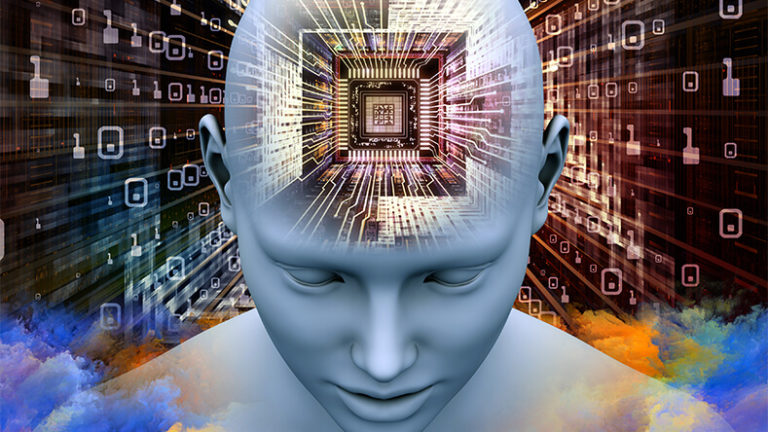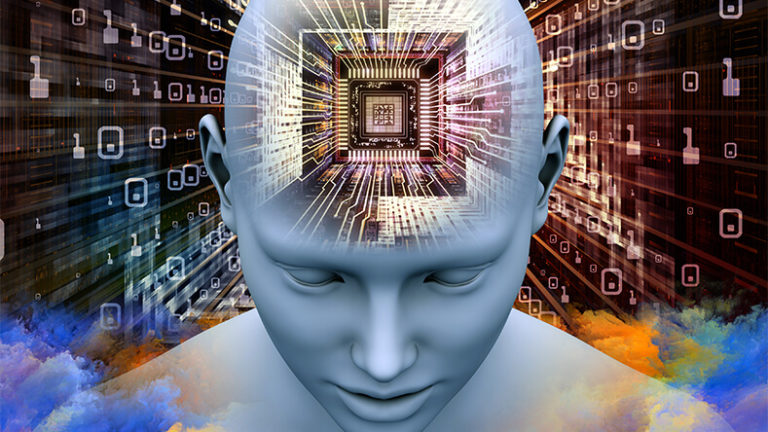Anúncios
The future is knocking on our doorstep, promising a world where the line between science fiction and reality blurs. Neural interfaces, once only imagined in the realms of Star Trek and Neuromancer, are now becoming an integral part of scientific research and technological advancements. This cutting-edge technology aims to revolutionize our interaction with machines and possibly even each other.
Neural interfaces or brain-computer interfaces (BCIs) are communication pathways between the brain and an external device. This transformative technology has the potential to redefine human capabilities, from restoring physical abilities to the disabled to enhancing human cognition. But, how far have we come in this field? What are the challenges that still lie ahead?
Anúncios
This post delves into the fascinating world of neural interfaces, exploring their history, their current state of progress, and their potential future applications. It offers a comprehensive overview of how this technology could bridge the gap between our minds and machines, potentially changing the way we live, work, and interact with our environment.
As we embark on this journey, we will unravel the mysteries of the human brain and its potential to power and interact with machines. From decoding neural signals to developing non-invasive methods of interfacing, this post will take you through the latest breakthroughs and hurdles in this cutting-edge field.
Anúncios
So, brace yourself to dive deep into a world where reality meets science fiction, and get ready to unlock the future with neural interfaces. It’s not just about pushing the boundaries of what’s possible; it’s about redefining the human experience in ways we’ve only dared to dream. The future is now, and it’s time we embrace it.
The Advent of Neural Interfaces
The realm of neural interfaces—also known as brain-computer interfaces (BCIs)—is a captivating frontier where neuroscience and advanced technology converge, gradually erasing the line between thought and action, biology and circuitry. At its core, a neural interface is a system designed to establish direct communication between the brain’s neural activity and an external device, effectively allowing the mind to interact with machines without the need for physical input.
Historically, these systems have found their strongest foothold in the medical field, acting as crucial tools for patients suffering from severe motor impairments. From enabling individuals with paralysis to control prosthetic limbs, to providing communication pathways for those suffering from locked-in syndrome, the initial use cases of neural interfaces were profoundly life-changing, albeit limited to very specific clinical settings.
However, as the pace of innovation accelerates, the scope and ambition of neural interfaces have grown exponentially. What was once the exclusive domain of rehabilitation medicine is now expanding into areas like cognitive enhancement, immersive entertainment, digital communication, and even consumer electronics. Today, we are beginning to see neural interface concepts tested not just in labs and hospitals, but in Silicon Valley startups and tech expos around the globe.
The potential is staggering. Neural interfaces could pave the way for restoring lost sensory input, boosting memory retention, accelerating learning, and creating entirely new modalities of interaction between humans and machines. They even open the door to science fiction–like possibilities such as brain-to-brain communication, allowing ideas and emotions to be shared directly, bypassing language entirely.
Still, these breakthroughs come with crucial questions. How close are we to safely and reliably decoding the human brain’s complex signals? What ethical frameworks need to be in place before we move from healing to enhancing? As we stand at the cusp of a new cognitive era, one thing is clear: neural interfaces are not just a technological development—they are the beginning of a new chapter in the story of human potential.
Current Applications and Research
While the concept of neural interfaces might feel like a product of the future, their origins can be traced back to the early 1970s. One of the earliest examples was the development of cochlear implants—a groundbreaking medical technology that offered a rudimentary form of brain-computer interfacing by directly stimulating the auditory nerve to restore hearing. These early successes laid the groundwork for more complex systems and inspired decades of research into the brain’s ability to interact with external technology.

Today, neural interfaces have expanded well beyond auditory assistance. They are being explored in a wide array of medical, experimental, and even commercial contexts. In the medical realm, these interfaces are helping individuals with spinal cord injuries regain a degree of autonomy by enabling them to control robotic limbs or computer cursors through thought alone. For patients suffering from degenerative conditions such as ALS (amyotrophic lateral sclerosis), BCIs are being used to provide new modes of communication, often through eye-tracking combined with brain signal interpretation.
Perhaps the most high-profile development in the field comes from Neuralink, a neurotechnology company founded by Elon Musk. Neuralink aims to create high-bandwidth, fully implantable brain-machine interfaces capable not only of restoring motor function but also of eventually facilitating seamless communication between the human brain and external computing systems. The company has already demonstrated early prototypes that allow monkeys to play video games using only their minds—a striking illustration of BCI potential.
Academic institutions are also leading the charge. At UC Berkeley, researchers are experimenting with neural implants to decode speech directly from brain activity, offering hope for individuals who have lost the ability to speak. Meanwhile, teams at the University of Washington are developing systems aimed at restoring vision in individuals with retinal degeneration through direct brain stimulation.
The pace of discovery is accelerating, driven by interdisciplinary collaboration across neuroscience, computer science, biomedical engineering, and artificial intelligence. What was once considered purely experimental is now transitioning into viable clinical solutions and, potentially, everyday technologies. With each breakthrough, the vision of integrating the human brain with machines becomes less science fiction and more scientific reality.
While the potential of neural interfaces is undeniably transformative, the path toward widespread adoption is paved with complex challenges that span scientific, technological, medical, and ethical domains. As researchers and innovators strive to bring these systems closer to practical application, they are encountering a series of significant obstacles that must be carefully navigated.
Technical and Scientific Challenges
At the core of neural interface development lies the daunting task of decoding the brain’s intricate language. The human brain contains an estimated 86 billion neurons, each potentially firing in milliseconds across trillions of synapses. Capturing and interpreting this immense volume of electrical activity accurately is one of the greatest hurdles for engineers and neuroscientists alike.
One key difficulty is the variability of neural signals between individuals. No two brains are wired exactly the same—differences in structure, function, and signal patterns mean that a one-size-fits-all solution is highly unlikely. This presents a problem when trying to develop universal systems or commercial-scale products that can work effectively across a broad population. Customization may be necessary, but it significantly increases the cost and complexity of deployment.
Another issue is the stability and longevity of neural recordings. Over time, implanted electrodes can degrade or provoke immune responses, leading to inflammation or scar tissue that interferes with signal clarity. Maintaining consistent, high-quality data capture over months or years remains an elusive goal.
Moreover, many neural interfaces today rely on invasive surgical procedures to implant electrodes directly into the brain. While these offer better signal fidelity, they carry substantial risks, including infection, hemorrhage, and long-term complications. This level of invasiveness naturally raises concerns among patients and the broader public, limiting interest and adoption outside of critical medical cases.
To counteract these issues, researchers are exploring non-invasive or minimally invasive alternatives, such as EEG (electroencephalography), MEG (magnetoencephalography), and fNIRS (functional near-infrared spectroscopy). While these approaches reduce physical risk, they also come with trade-offs—mainly in the form of lower resolution and reduced signal specificity. In other words, they may be safer but are also far less precise when it comes to reading complex brain activity in real time.
Integration and Data Processing
Another formidable technical challenge lies in real-time data processing and interpretation. Even when neural signals are captured successfully, making sense of that data in a meaningful way requires powerful algorithms and machine learning models. Training these models to accurately translate thought into action—such as moving a cursor, typing a word, or controlling a robotic limb—demands vast datasets and constant refinement. Factors such as noise in signal collection, user fatigue, or cognitive variability make this process even more complex.
Additionally, developers must also consider how to integrate neural interfaces with existing digital ecosystems. Creating seamless interfaces that work across multiple platforms and devices is not only a technical necessity but also a key driver of user adoption. Interoperability, latency, user interface design, and system responsiveness are all critical factors in delivering a viable product experience.
Bridging Innovation and Accessibility
Finally, one overarching technical and logistical barrier is accessibility. Currently, the cost of developing and deploying neural interface systems is extremely high, with most technologies still confined to laboratories, academic institutions, and well-funded private companies. Widespread use will require significant cost reductions, scalable production techniques, and consumer-grade reliability.
The combination of biological complexity, technological limitations, and the challenge of integrating human thought with digital systems makes the development of neural interfaces one of the most ambitious frontiers in modern science. Despite these hurdles, ongoing innovation continues to yield incremental improvements, slowly but steadily bringing the dream of seamless brain-computer communication closer to reality.
Ethical Challenges
The development of neural interfaces also raises several ethical issues. These include concerns over privacy, as the potential for misuse of such technology is significant. For instance, could neural interfaces be used to read thoughts without consent, or even to control individuals against their will?
Moreover, there are questions about who will have access to this technology. Will it be available to everyone, or will it become another tool for exacerbating existing inequalities? These are complex issues that require careful consideration and robust regulatory frameworks.
The Future of Neural Interfaces
Despite the challenges, the future of neural interfaces looks promising. Recent advancements suggest that we are on the cusp of a new era, one in which neural interfaces could become a common feature of our lives.

Expanding the Scope of Neural Interfaces
The potential applications of neural interfaces extend far beyond their current use in medicine. For instance, they could be used to enhance cognitive capabilities, potentially allowing us to learn new skills or information at unprecedented rates. They could also facilitate new forms of communication, potentially enabling telepathy or the direct sharing of experiences and emotions.
Furthermore, neural interfaces could play a key role in the development of advanced artificial intelligence (AI) systems. By providing a direct link between the human brain and AI, these interfaces could allow for a more seamless integration of artificial and natural intelligence.
Preparing for a Neural Interface Future
While the future of neural interfaces is exciting, it also demands preparation. As with any new technology, the impact of neural interfaces on society will largely depend on how they are used and regulated.
Key to this will be the development of robust regulatory frameworks that balance the need for innovation with the protection of individual rights. Such frameworks should address issues such as privacy, consent, and access, ensuring that the benefits of neural interfaces are realized while minimizing potential risks.
Furthermore, there is a need for public dialogue about the use of neural interfaces. Given the profound implications of this technology, it is crucial that all members of society have a say in how it is developed and used. This includes not only scientists and policymakers but also those who stand to be most affected by these developments – the public.
Conclusion
In conclusion, the future of neural interfaces is a dynamic blend of scientific innovation and the imaginative realm of science fiction, poised to revolutionize our understanding of the human brain. This technological frontier is bridging the gap between fantasy and reality, promising a future where unlocking the potential of the human mind is not just a dream, but a tangible reality. The advances in neural interfaces are set to transform not only the field of neuroscience but also society at large, impacting everything from healthcare to education, and beyond. As we continue to explore and understand the intricate workings of our brains, the once fantastical notion of mind-machine symbiosis is becoming increasingly plausible. This progress, however, also brings forth new challenges and ethical considerations that require thoughtful deliberation. In essence, the future of neural interfaces is an exciting voyage into the unknown, with endless potential for innovation and discovery. The science fiction of yesterday is becoming the science fact of today, paving the way for a future that is as fascinating as it is unpredictable.


